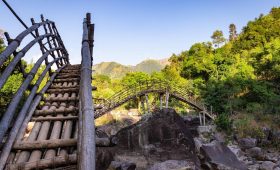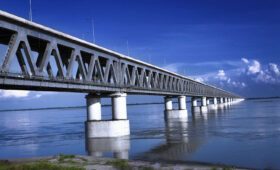Dzukou Valley Trek Best Time
If you want to see a masterpiece of nature covered with colorful, nodding wildflowers, you should go between April and September, which is the blossoming season and the finest time to visit Dzukou Valley Trek, or from October to March during the winter, which has a different type of bleak, lonely beauty.
In the idyllic Dzukou Valley, a peaceful region and a hidden kingdom in the North-East of India. The valley is a tranquil getaway where people may get away from the chaos and helter-skelter of cities.
It is possible to compare the terrain of undulating rolling hills with a work of art created by nature, as it is covered in a vibrant carpet of flowers and wild dwarf bamboo.
Dzukou Valley is located 2,452 metres above sea level, deep within the clouds. At the border between Nagaland and Manipur is this lovely divine location of flora and fauna.
A significant feature that adorns the gorgeous setting is the Dzukou Lily (Lilium Chitrangadae), which is unique to Dzukou Valley.
Its unique outlines are made more glamorous by the ageless weathering of rocks that produced wonderfully sculpted sweeps of hillocks. The charred trees scattered throughout the valley, remnants of two massive forest fires, give the broad views a mystic quality.
Best time to visit Dzukou Valley trek complete guide —
The Dzukou Valley, which crosses the border between Nagaland and Manipur, is a prime example of nature’s finest work. As far as your eyes can see, the appealing valley is filled with lush, treeless knolls that have a velvety green colour.
Select your time period for the Dzukou Valley’s best time to visit. With the summer, the valley is awash in vibrant blooms, but in the winter, the valley is transformed into a chilly canvas dusted with snow.
The greatest time to visit Dzukou Valley is in the month of July, we can assure you, if you enjoy the steady rain, the lush green forest, and the wetlands.
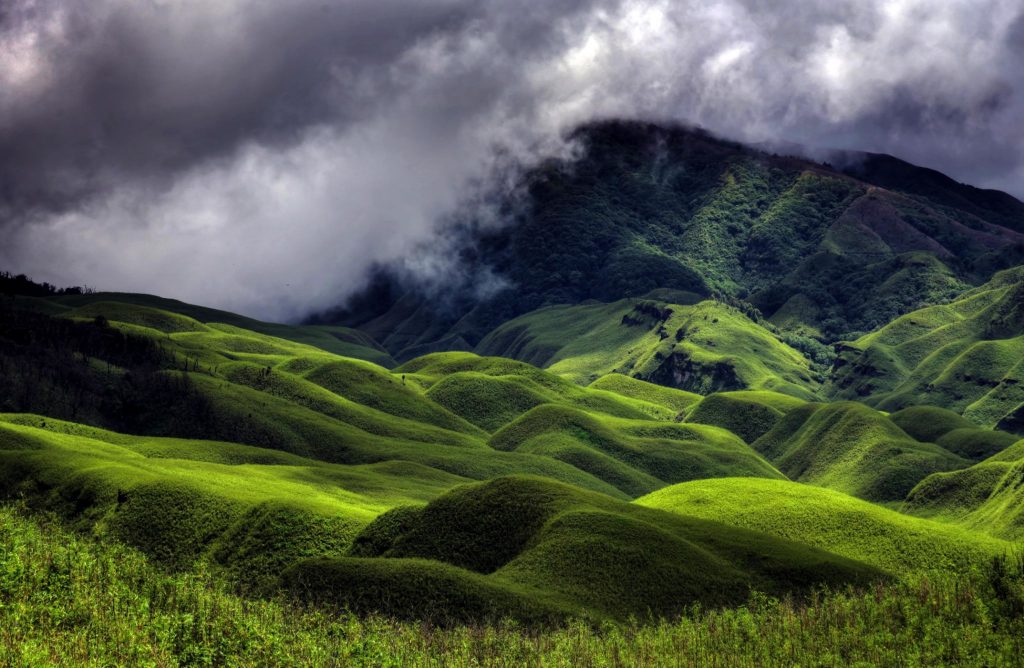
The offbeat traveler’s ideal time to explore Dzukou Valley is from October to May. Dzukou Valley Trip Cost
Valley of Dzukou, Nagaland When is best to travel? The summer (April to May) and the winter (November to March) are the two driest seasons to explore the picture-postcard environment, but whenever you go, you’re guaranteed to be in for a visual feast.
BLOOMING SEASON ( APRIL — SEPTEMBER )
The best time to visit Dzukou Valley is from April to August if your dream is to see a picturesque valley covered in colourful, nodding wildflowers.
The Valley is typically at its most refreshing during the first two weeks of July when flowers are at their finest. The ideal time to explore Dzukou Valley is right now.
The indigenous Dzukou Lily (Lilium Chitrangadae) makes its unrivalled appearance in the hazy and sloppy monsoon arms. The valley’s beauty is displayed by the lilies, aconitum, euphorbia, and multicoloured rhododendrons that are strewn throughout it.
The great season to visit Dzukou Valley is during the Flowering Season if you want to see the valley covered with vibrant wildflowers blooming and illuminating the marvel of nature’s creation.
Although monsoon is the ideal season to visit Dzukou Valley, be cautious on the trails because they become muddier and slipperier, and leeches will be active throughout the day. Therefore, it is necessary to carry salt bags or spray bottles packed with brine.
Occasionally, upon leaving the valley even during monsoon season, tourists become stranded there or are swept away in flash floods.
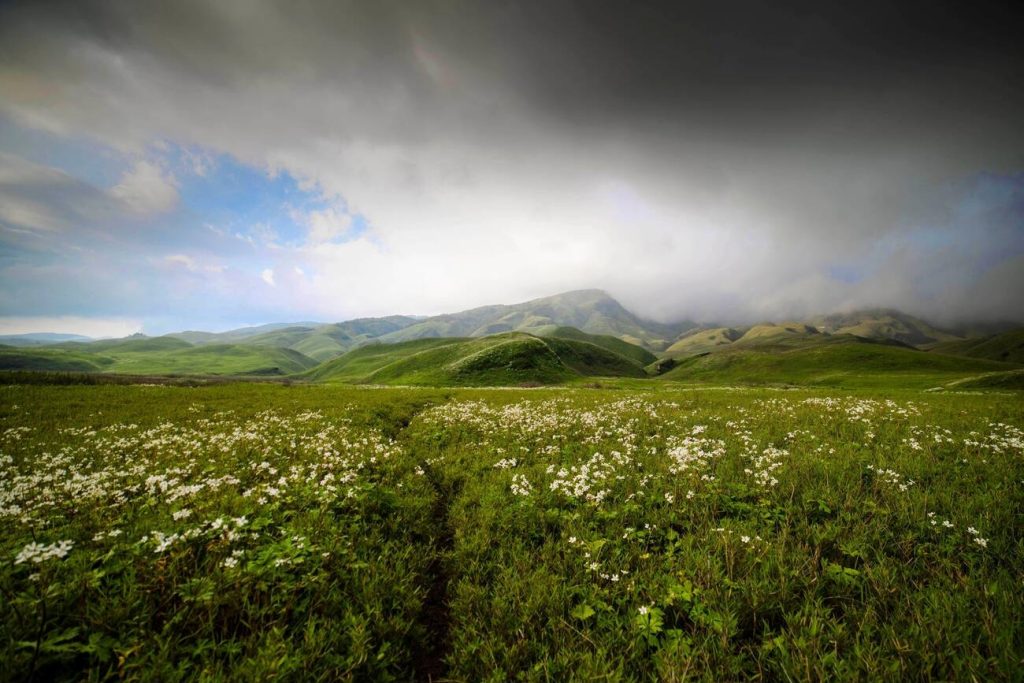
WINTER SEASON ( OCTOBER — MARCH )
The greatest time to visit Dzukou Valley is not during the winter because one misses the opportunity to see the wildflowers in bloom. As one would anticipate in such tropical states, the temperature also dips much lower.
As the chlorophyll in the leaves of the dwarf bamboo plants degrades in the winter, the valley loses its emerald green colour and turns more straw-colored.
During the night, the flowing rivulets at the foot of the valley freeze, and delicate ice crystals start to form on the greenery. It is possible to see it in the early morning before they start to gradually thaw again at daylight.
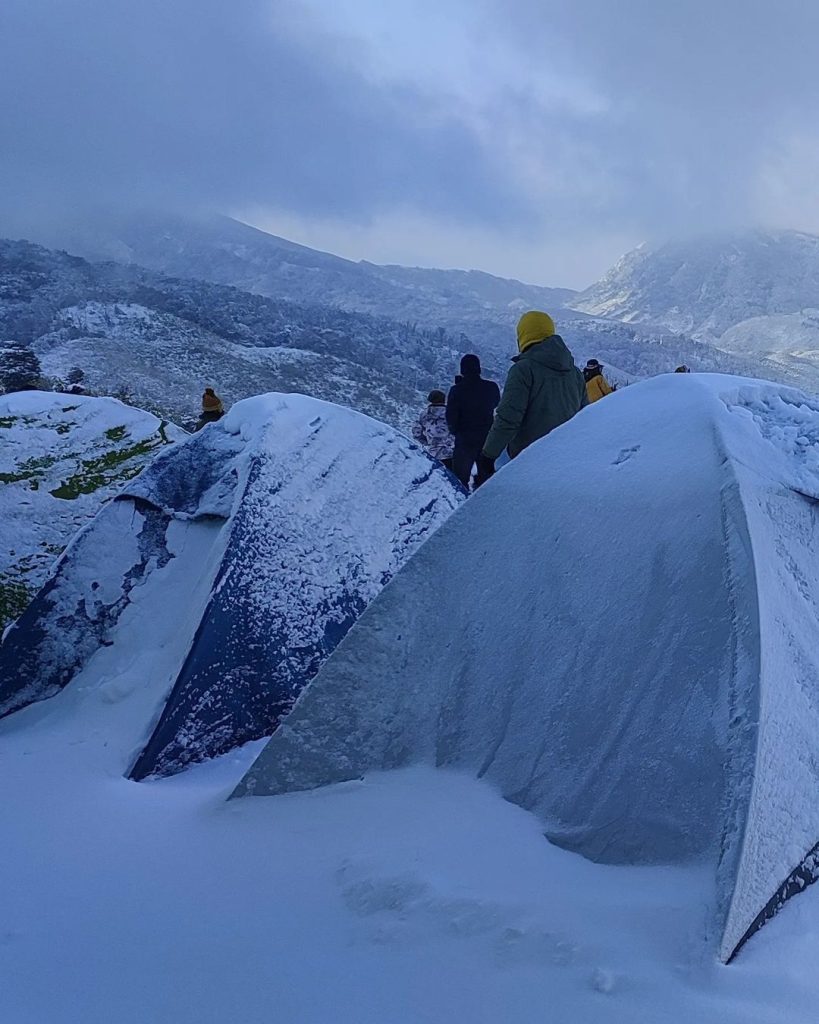
Winter days frequently see air temperatures near 10 °C. Air temperatures would frequently drop below freezing at night, and one would wake up each morning to find a thick layer of frost covering the entire valley.
The catch is that winter is the ideal time to visit Dzukou Valley if one wants to see such frost covers.
We can tell you that any season is ideal for the Dzukou Valley walk. If you are unable to visit during the flowering season, it is still a lovely area to stroll around in because it has much more to offer than only its vibrant flora and fauna.
Only local visitors from Nagaland and Manipur are familiar with the Dzukou Valley. This location is typically less busy than the other attractive areas in the Seven Sister States and is still relatively unknown to many international tourists.
Exploring the Dzukou Valley trek (dzukou valley trip cost)
The pristine valley of treeless gentle slopes is speckled with burned trees and covered in dwarf grasses, serving as a reminder of the devastation caused by the flames. Early in the morning, the sugar clouds that float below the valley gently give way to the sun’s beams, giving the valley a golden colour.
The clean valley glows in many colours of green on a sunny day, with the brilliant blue skies in the background. The valley’s winding rivulet, which has crystal-clear water, its hidden perennial waterfalls, its deep ravines, and its caverns all appear to have been expertly fashioned by nature.
A hike to the valley’s bottom: On the way down from the guesthouse at the valley’s top, you can see the breathtaking valley with floral decorations.
Take a plunge in the rivulet’s pure water: The rivulet’s clean water gently cascades through the valley’s rocks and crevices, forming natural pools. Through the valley, it meanders before getting shallower toward the middle.
The stream shifts between rivulet, waterfall, and water pools as they go across the valley. Take a refreshing soak in this water bath to revitalise your trek across the valley.
Enjoy the vibrant flower riot: Almost everyone wants to see the valley in full bloom. Therefore, while planning your vacation, be sure to go between May and August, with June being the ideal month to explore Dzukou Valley.
The Dzukou Valley is ablaze with white, yellow, and even blue flowers in bloom. In isolated areas all around the valley, the endemic Dzukou Lily blooms, sprinkling pink petals across the green background.
The Dzukou Valley is known as the “Valley of Flowers in the Northeast” as a result of its exquisite floral displays.
Enjoy the sights from the rest area: When you arrive to the rest home, the first thing you will notice is the stunning view of the Dzukou valley from the building. It would be simple to while away a few hours taking in the scenery and soaking up the sun.
The best time to visit Dzukou Valley is outside of monsoon season because there is a higher likelihood of clear skies during these times. This will give you the best chance of seeing a perfect sunset.
Exploring the Ghost Cave: It is only a 15-minute walk from the rest house to the “Ghost Cave,” also known as “Bhoot Gufa,” in the Dzukou valley.


